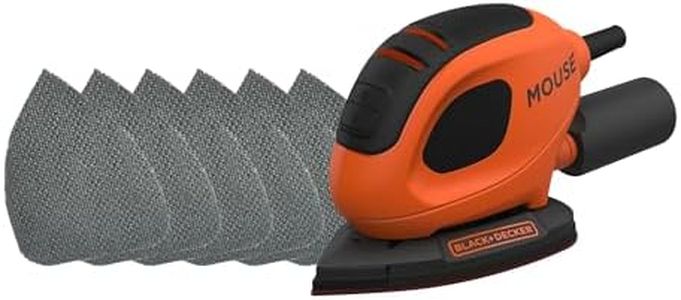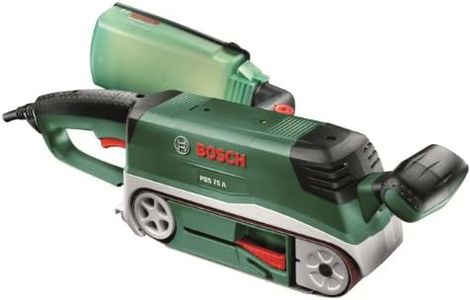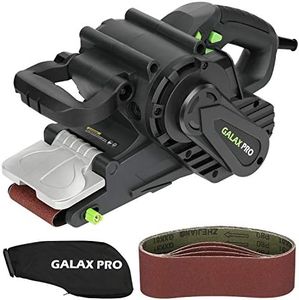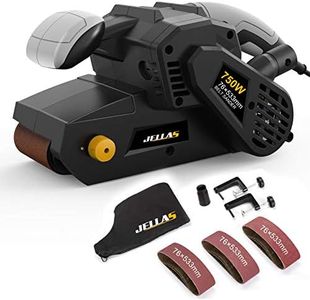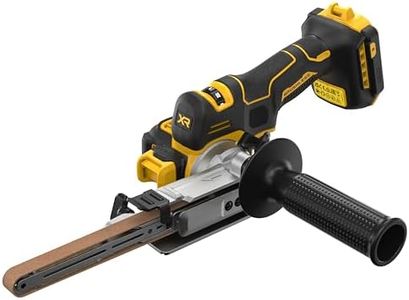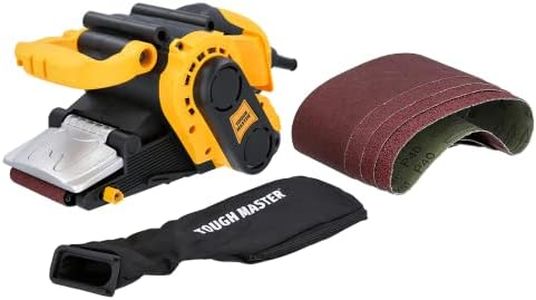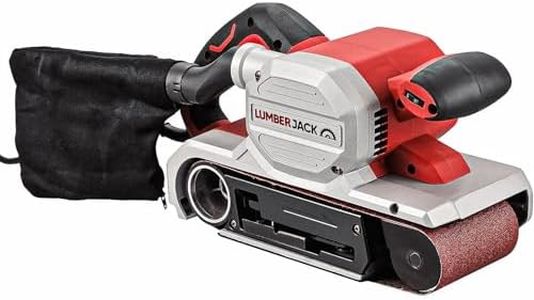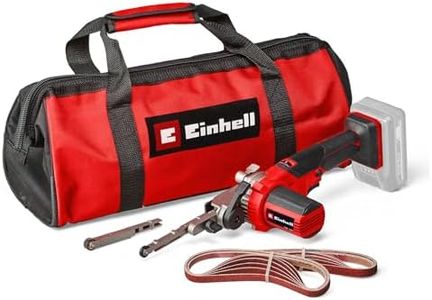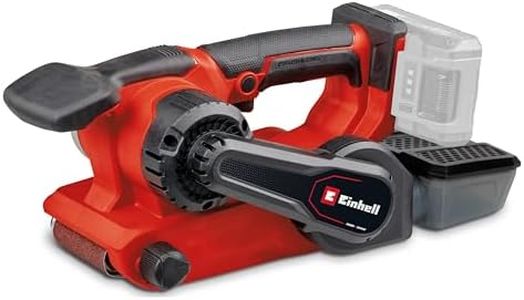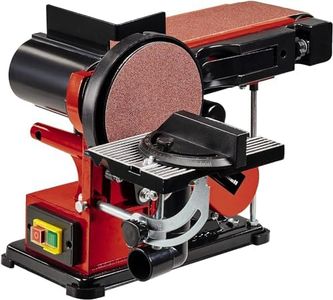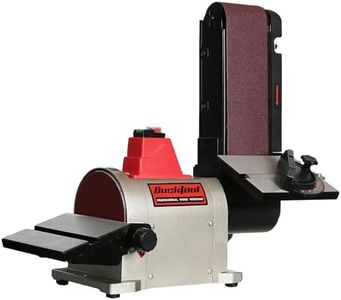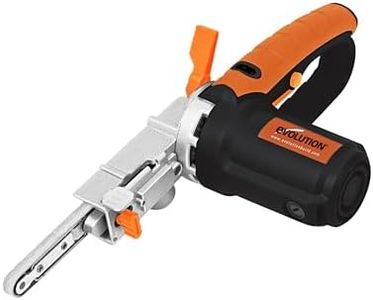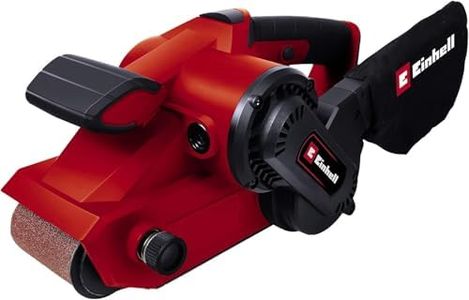We Use CookiesWe use cookies to enhance the security, performance,
functionality and for analytical and promotional activities. By continuing to browse this site you
are agreeing to our privacy policy
10 Best Belt Sanders
From leading brands and best sellers available on the web.Buying Guide for the Best Belt Sanders
When choosing a belt sander, it's important to consider the type of projects you'll be working on and the materials you'll be sanding. Belt sanders are powerful tools used for smoothing and shaping wood, metal, and other materials. They are ideal for large, flat surfaces and can remove material quickly. Understanding the key specifications will help you select a belt sander that meets your needs and ensures efficient and effective sanding.Belt SizeBelt size refers to the dimensions of the sanding belt, typically given in width and length. This spec is important because it determines the surface area that can be sanded at one time. Common belt sizes include 3x18 inches, 3x21 inches, and 4x24 inches. Smaller belts are more maneuverable and suitable for detailed work, while larger belts cover more area and are better for large, flat surfaces. Choose a belt size based on the scale of your projects and the level of detail required.
Motor PowerMotor power, measured in amps, indicates the strength and efficiency of the belt sander. A more powerful motor can handle tougher materials and more demanding tasks. Belt sanders typically range from 6 to 12 amps. Lower amp models are suitable for light-duty tasks and softer materials, while higher amp models are better for heavy-duty sanding and harder materials. Consider the types of materials you'll be working with and the intensity of the sanding tasks when selecting motor power.
Speed ControlSpeed control refers to the ability to adjust the speed of the sanding belt, usually measured in feet per minute (FPM). This feature is important for versatility, allowing you to match the speed to the material and task. Some belt sanders have a single speed, while others offer variable speed control. Single-speed models are simpler and often sufficient for general use, but variable speed models provide more flexibility for different materials and finishes. Choose based on whether you need precision and control for various tasks.
Dust CollectionDust collection is a feature that helps manage the dust produced during sanding. This is important for maintaining a clean work environment and protecting your health. Belt sanders may come with a dust bag or a port for connecting to a vacuum. Models with effective dust collection systems are preferable, especially for indoor use or when working with materials that produce a lot of dust. Consider how important dust management is for your workspace and health when choosing a sander.
Weight and ErgonomicsWeight and ergonomics refer to the physical design and comfort of using the belt sander. This is important for ease of use and reducing fatigue during extended use. Lighter models are easier to handle and maneuver, especially for overhead or vertical sanding. Ergonomic designs with comfortable grips and balanced weight distribution can make a significant difference in user comfort. Consider how long you'll be using the sander and the types of projects to determine the importance of weight and ergonomics.
